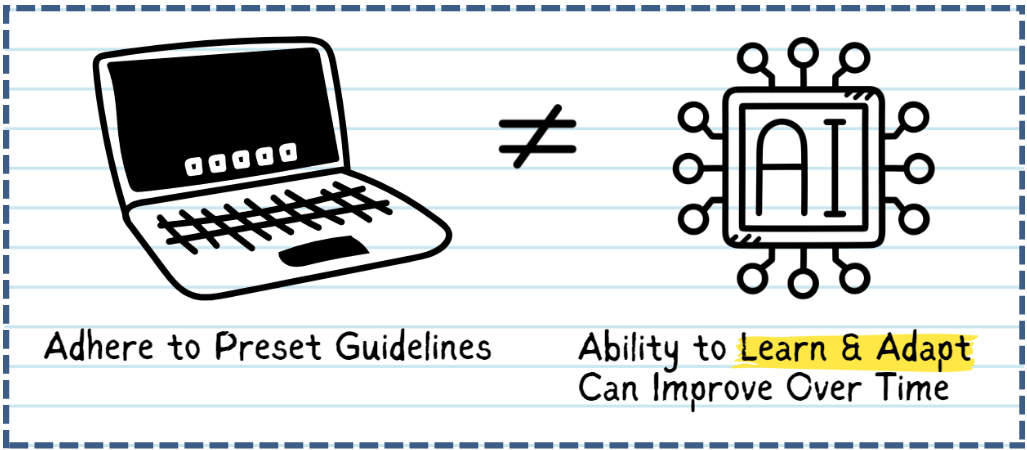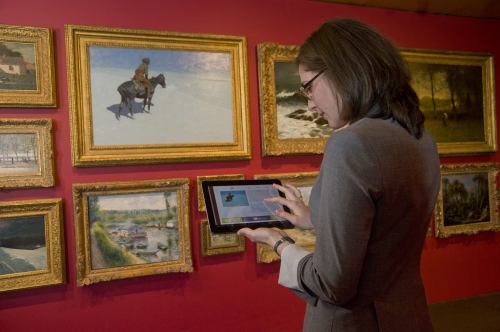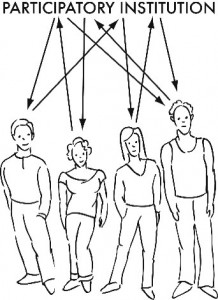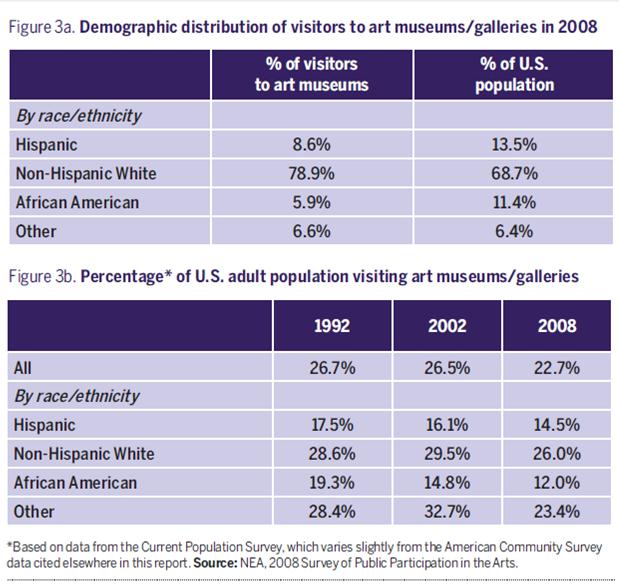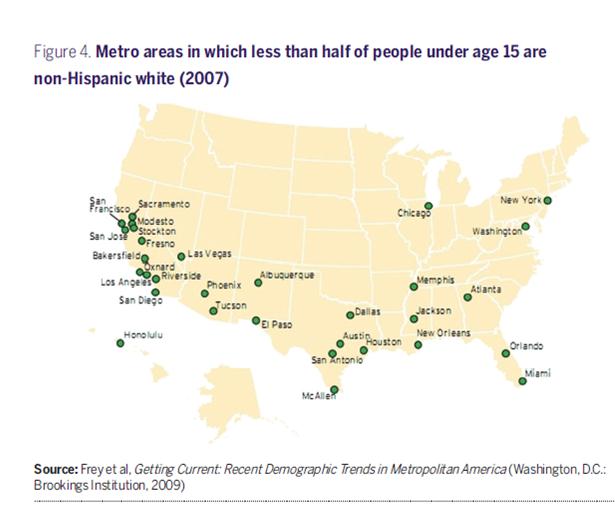If you told the average San Francisco resident 40 years ago that the art scene in the Bay Area would be gasping for life in 2015, they probably would have laughed in your face. But it is 2015, and that is the reality we are facing. The tech giants have moved in, and tension is building between the Silicon Valley community and its non-profit entities. In particular, arts organizations seem to be at an extreme disadvantage for a few reasons:
Research Update: Security and the Cloud
When it comes to the cloud, security is a widespread concern across sectors. According to a recent survey, conducted by Lockheed Martin and the Cyber Security Alliance, security was listed as the top concern by Government IT decision makers, despite overall increasing adoption of cloud technology. Security is a multifaceted issue, ranging from the above example concerning what rights are retained when information is uploaded to the cloud, to more classical issues involving data theft. The basic fact is that when organizations take their data into the cloud they are ceding day-to-day control of that data. Though they can access it and share it at will, they typically will have no idea in which physical datacenter, or even in which country, their files are currently stored. Users must rely on the provider to not just manage their data responsibly, and to prevent loss of their data through hardware failure, but to keep their data encrypted and inaccessible to unauthorized users.
Engaging Technology: uCurate and uExplore at the Clark
What’s going on at the Sterling and Francine Clark Institute in Williamstown, Massachusetts? Let’s see, there are iPads, tablets, interactive digital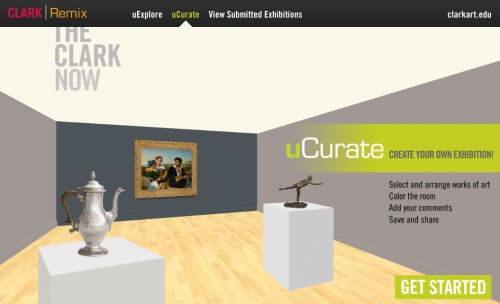 programs, touchscreens and kiosks throughout the galleries, the new exhibition, Clark Remix, and oh yes, new curators- YOU.
In a February press release, the Clark announced its exciting new initiative to encourage visitor interaction and participation in its galleries. According to the press release, Clark Remix is "a dynamic salon-style installation featuring some 80 paintings, 20 sculptures, and 300 of the institute’s finest examples of decorative arts."
programs, touchscreens and kiosks throughout the galleries, the new exhibition, Clark Remix, and oh yes, new curators- YOU.
In a February press release, the Clark announced its exciting new initiative to encourage visitor interaction and participation in its galleries. According to the press release, Clark Remix is "a dynamic salon-style installation featuring some 80 paintings, 20 sculptures, and 300 of the institute’s finest examples of decorative arts."
As part of the exhibit, the Clark has introduced the interactive, digital programs uExplore and uCurate. Both programs are accessible online, on the visitor’s own personal device, on touchscreens and kiosks throughout the gallery and on iPads and tablets provided by the Clark for use in the museum. Basically, the programs are EXTREMELY accessible and user friendly- I myself have spent all afternoon here in Pittsburgh exploring the Clark’s collection and building my own exhibition, instead of reading for class (ahh priorities).
The Director of the Clark, Michael Conforti explains the premise of Clark Remix,
Clark Remix represents one of many programs that the Clark is developing to engage audiences in exciting ways. Clark Remix allows us to present our permanent collection in an installation that is both beautiful and innovative. Our salon-style presentation provides a very different and intriguing perspective on many of the works that have become familiar favorites for Clark visitors. Adding virtual components to the exhibition allows us to reach new audiences and invite them to discover and interact with our collection.
It works like this. uExplore allows the visitor to learn more about the Clark’s collection in a visually stimulating, highly organized, and digitally oriented way. Items are grouped into categories (paintings, sculpture, glass silver and ceramics) to allow the user to navigate with ease through the extensive collection. Selecting an image of the desired object, a more detailed, but not overwhelming, explanation of the item becomes available. When appropriate, audio and video clips accompany the information.
It is a beautifully designed and easily navigable interface. uExplore’s presence in the gallery encourages visitors to delve more deeply into the history of the collection, while they are on-site.
The second digital application to accompany the exhibit, uCurate, gives visitors the opportunity to participate in the curatorial process. As the name implies, YOU, aka the visitor, plan and design a 3D virtual exhibition with the Clark’s collection. The participant makes all decisions, from what to include and how to arrange
the objects, to wall color selection and wall text. Users of the program have the option to submit their designs for consideration by Clark’s curatorial team AND to share their designs through social media channels (promoting the museum and the digital program). Submissions to the Clark will be reviewed regularly. Why submit your design for professional review by Clark curators? Because if selected, the virtual design will be transformed into an actual exhibition! The lucky designers will be invited to assist in their exhibition’s installation, in the decision-making process, in the creation of wall text and in writing the curator’s statement.
uCurate and uExplore were designed by the Clark in collaboration with Swim Design Consultants and Virtual Gallerie to afford the public a voice and role in the museum’s exhibition planning process. Allowing the public to suggest actual designs for implementation challenges what has been the accepted and traditional decision-making process in the museum. That is, all decisions are made internally; the public only receives, not contributes. But the Clark is trying something different. In a recent New York Times' article on the Clark’s innovative crowd-sourcing approach, Conforti said,
For generations, curators ran the show and told you what to believe. In a world of blogging and Wikipedia, we realized that we can learn from our audience, and from multiple interpretations.
This is Museum 2.0 in action. Where visitors become users and museums become, as Nina Simon explains, “dynamic platforms for content generation and sharing.”
for content generation and sharing.”
So Kudos to you, Clark Museum. This is an engaging and relevant use of technology where the user AND museum win.
Public Financing for the Arts in Europe Takes a Hit
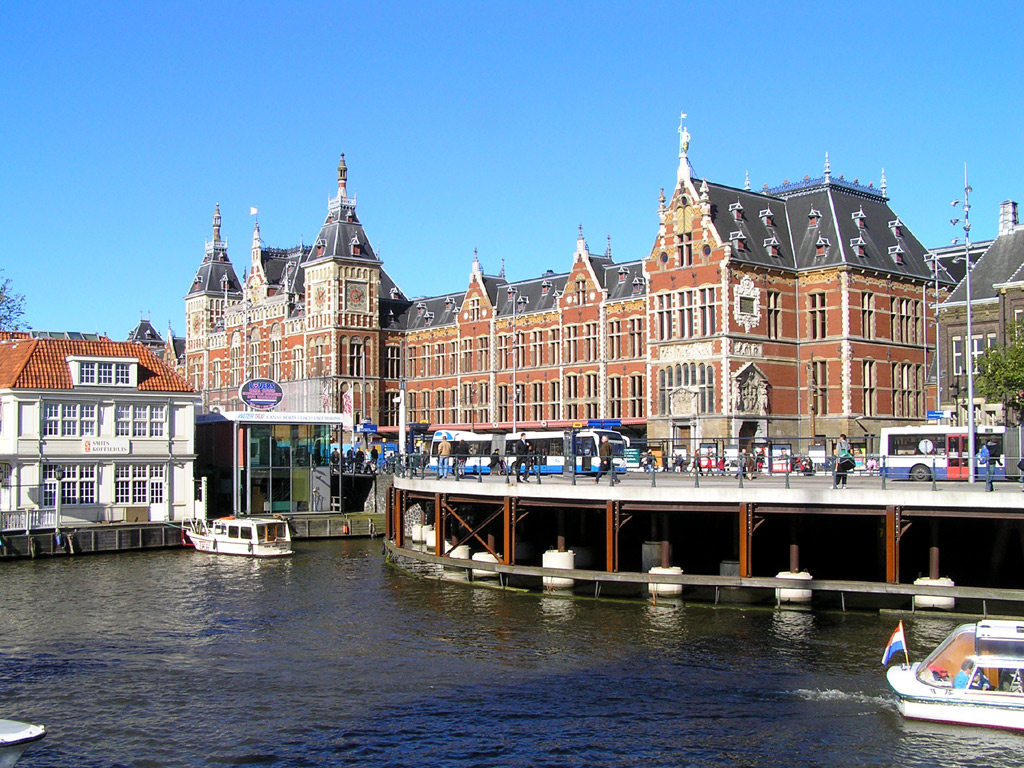 Tell me if you have heard this one before.
In the midst of an economic downturn, a country desperately searches for cuts in spending anywhere it can, as calls for budget austerity grow louder. In the end, it’s the more vulnerable programs that are hit the hardest, which often includes education programs, safety net measures, and the arts community.
Tell me if you have heard this one before.
In the midst of an economic downturn, a country desperately searches for cuts in spending anywhere it can, as calls for budget austerity grow louder. In the end, it’s the more vulnerable programs that are hit the hardest, which often includes education programs, safety net measures, and the arts community.
While that above paragraph would describe the arts community in the United States in recent years, the trend is now playing out across Europe as debt-ridden countries turn to austerity measures in the face of the European debt crisis. While European countries spend significantly more on the arts than we do in the United States, the dangers of budget austerity in the coming years for the arts community in several European countries are very, very real.
I have been thinking a lot about this issue of arts funding in Europe vs. the United States over the past week, and two events in particular heightened my interest. First, this past Friday, we sponsored a Carnegie Mellon Master of Arts Management Speaker Series event with the Consulate of the Netherlands, who were in town for the annual Dutch Festival in Pittsburgh. We started talking about the difference in the way the arts are funded in a country like the Netherlands versus the way it is funded here at home. More on that in a minute.
The other item that caught my interest was a front page story in the New York Times yesterday about the fate of public financing for the arts in Europe. As I mentioned above, Europe is now going through the same kind of austerity measures that rocked the United States in 2009: debt is growing, calls for fiscal restraint are getting louder, and every program is being measured for its return on investment and how important it is going forward.
The numbers are striking: as the New York Times reports, in the Netherlands, the budget for arts and culture is seeing a decrease of roughly $265 million, or 25 percent. In addition to those cuts, the public is being asked to pay more to see shows and events, with increased taxes on tickets.
These cuts are hitting smaller venues, troupes, and companies the hardest: with less funding to go around, existing expenditures are being targeted at more established performers, forcing more unique acts, which may be struggling for audiences, to face an uncertain future.
And while some may feel that cuts to the arts in Europe would have little effect on the arts here in the United States, one of the expenses artists in Europe are cutting back on are trips and performances overseas, to countries like the United States. Artists are cancelling trips and forcing festivals to find alternative performers.
Another effect this is going to have on the American arts community is over the issue of fundraising. As we discussed with the Consulate of the Netherlands on Friday, there are different views towards art funding in Europe than there are here. In a country like the Netherlands, a resident pays higher taxes to pay for additional services like health care, transportation, and safety net measures. Another element of those increased taxes is funding for the arts; with the government taking a higher percentage out of every paycheck, many Dutch residents feel they are less inclined to donate their own money to the arts because they feel like the government is already doing it for them.
Here in the United States, the opposite is true: the National Endowment for the Arts (NEA) receives such a small percentage of overall government revenue (usually in the range of $150-160 million, compared to billions of dollars in several European countries) that the vast majority of funding for the arts comes from donations from individuals. Since Americans are taxed at a much lower rate, they have more disposable income, and thus more free to donate it to the art of their choosing. There are issues of whether a lot of this money is really going to where it is needed, but that is a discussion for another day.
With European governments cutting back on their arts funding, this is naturally going to lead to artists in Europe to seek alternative sources of revenue. As the New York Times explains, this includes going after their descendents currently living in America – who may be already donating to arts organizations in their communities.
So this presents a problem: a global recession and austerity measures in dozens of countries, all leading to a shift in the way arts are funded worldwide. It will lead to more uncertainty, a greater dispersion of artistic funding and increased competition for the individuals who provide a sizeable percentage of giving.
Is the current model, where American artists rely mostly on private donations and European artists rely on government grants, sustainable? For the United States, absolutely. With calls from some politicians to cut and even eliminate funding for the NEA and other culture programs, there is certainly little chance of seeing an increase in federal funds for the arts.
As for Europe? That is a different story. As the story goes, as the pond gets smaller (in this case, the pond symbolizing the amount of funding), the fish will get nervous, and perhaps seek refuge elsewhere, in the form of spending more of their time fundraising, at the expense of the very same art they are seeking to promote. With artists now having to listen to potential funders, who may have a different vision for what kind of art they want to see, the impact on what kind of art is made and performed is bound to be substantial.
In the short term, the effect is obvious: less festivals, traveling art troupes, and shows. Fewer jobs for artists in countries like Italy, Hungary, Netherlands and Greece. Fewer opportunities for tourists and residents to see the best of what each of these countries has to offer.
It really is sad, but perhaps unavoidable. As I have written before, we seem to find ourselves in the era of budget austerity, and even while the economy has shown signs of improvement in recent months, the desire to increase funding for the arts pales in comparison to support for other existing programs.
The promise and benefit of increased funding for the arts, both at the private and federal level, is well known to all readers of this blog. The New York Times piece describes Europe as the place “where art is life,” and while that is certainly true to anyone who has visited, the newfound austerity measures being put in place represent a significant threat to that very same life going forward.
Creators Project in San Francisco
 Last weekend the Creator's Project garnered significant attention from national media. From the mission statement on the website "The Creators Project is a global celebration of art and technology." and "The Creators Project is a new kind of arts and culture channel for a new kind of world." As an intersection between art and tech it seems appropriate that the blog weigh in and take a look at what they did, how they did it, and the implications. The Creator's Project has major sponsorship from Intel Corp and VICE with significant online free content focusing on mostly short form interview of Creator associated artists. This Project offers similar promise to other ventures to offering culture and arts online to ideas such as On The Boards TV and Jacob's Pillow Virtual Pillow but is already operating on a much larger scale than either of these.
Last weekend the Creator's Project garnered significant attention from national media. From the mission statement on the website "The Creators Project is a global celebration of art and technology." and "The Creators Project is a new kind of arts and culture channel for a new kind of world." As an intersection between art and tech it seems appropriate that the blog weigh in and take a look at what they did, how they did it, and the implications. The Creator's Project has major sponsorship from Intel Corp and VICE with significant online free content focusing on mostly short form interview of Creator associated artists. This Project offers similar promise to other ventures to offering culture and arts online to ideas such as On The Boards TV and Jacob's Pillow Virtual Pillow but is already operating on a much larger scale than either of these.
The Creators Project offers arts and culture online at a scale that is extraordinary for such a young institution. The levels of participation on information sharing that is happening through their website looks unparalleled and should be looked towards as a model for successful integration of technology and the arts. The Creators Project was started in May of 2010 by VICE and seems to have two major interfaces with the public. There is a exhibit/show that has toured around the world each year and an expanding web presence that now counts video downloads in the millions. The content is broken out into six different categories: Music, Film, Art, Design, Gaming, and Fashion and has engaged with artists from all of these areas to provide content online and for the annual festival. They will be rolling out content collected from the event last weekend (March 17-19, 2012) in the coming weeks.
Current content on the website is a mind blowing array of new directions taken by artists in each of the fields. One of the standout artists at the event last weekend was a new work from visual multidisciplinary artist Chris Milk. The installation called the Treachery of Sanctuary incorporated user interaction with digital transformation to look at elements of flight. Visuals of this can be found here.
Anther fascinating example that was found on the Creator's Project website was the Electronic Shadow from France. Electronic Shadow uses imaging technology and software to generate interactive 3D maps of people places and objects. These images then can be used and manipulated in artistic fashions. The implication for this technology would, for instance, be a game changing one for other art forms such as dance.
Exchange of ideas such as Creator's Project bring together the bleeding edge of Technology and the Arts and as such should be a point of engagement for institutions that are looking to modernize and include new audiences (and younger audiences). The artists involved have obviously successfully engaged these audiences already and by following the lead of these success stories arts leaders at more conventional organizations can find hope in a new direction in reshaping structure and content to address the demands of a more complex world.
The Role of the Arts in Economic Development
 As it pertains to funding for local arts projects, the past few years have not been too kind to the arts community. Budget cuts, austerity measures and changing priorities have meant less funding, and with it less jobs for artists and fewer arts opportunities and events for communities all across the country.
As the economy starts to grow (slowly) and optimism about future growth increases, state and local budgets are facing smaller budget deficits and the increasing likelihood of budget surpluses in future years. With these new resources comes the decision over how to spend resources in the best possible way to stimulate growth.
As it pertains to funding for local arts projects, the past few years have not been too kind to the arts community. Budget cuts, austerity measures and changing priorities have meant less funding, and with it less jobs for artists and fewer arts opportunities and events for communities all across the country.
As the economy starts to grow (slowly) and optimism about future growth increases, state and local budgets are facing smaller budget deficits and the increasing likelihood of budget surpluses in future years. With these new resources comes the decision over how to spend resources in the best possible way to stimulate growth.
In recent years, the National Endowment for the Arts (NEA) and other groups have given out millions of dollars in grants to local arts groups to help foster economic growth and assist arts communities in struggling areas of the country. As the money available to these groups continues to grow, and cities and states pondering the decision to invest again in the arts, the question is: what role do the arts play in economic development, and how vital is it to future growth?
I have written before about the tough budget constraints that governments are dealing with at the local level and the pressure this is putting on existing arts programs. Unlike the federal government, cities, counties and states are often required to balance their budgets on an annual basis; if sales tax receipts or other forms of revenue are down from the year before, as has often been the case during this economic downturn, governments have to turn to existing programs for cuts or outright abolition. With tax increases politically unfeasible, it’s often the most vulnerable programs that face the chopping block, and this includes the arts community.
Those of us who study public policy and urban planning are cognizant of the effect the arts can have on a city or neighborhood. As much as art enriches our lives and provides a sense of culture, the economic impact is minimal; this is not to take away from the arts community, but is rather meant to illustrate the larger forces that are required for long term economic growth, like housing, higher education, health care and free trade.
The Next American City recently looked at an example of a rust belt city facing tough economic times, Detroit, and how the arts community is helping bring the city back. Through the help of groups like the NEA and ArtPlace America, Wayne State University launched the Detroit FAB Lab, a hub that provides artists with access to equipment and tools for their artwork, like metalworking and woodworking, as well as mentoring services like business coaching and networking. In essence, it provides a community for artists to come together and share their work, their advice and their love for the arts, all with the backing of community grants and support.
Few cities are in need of support like this more than Detroit. Designed to help support the struggling manufacturing base in the Motor City, the grants provide a small step in the overall push to diversify and grow Detroit’s economy as it starts to come back from the recession that took such a toll on the city’s population and well being.
The millions of dollars in funding that are being given out by groups like NEA and ArtPlace also present a series of questions: is this money well spent? If the goal of the money is to spur economic development and growth, is it better spent elsewhere?
We can all agree that funding the arts is crucial to fostering community and culture in cities all across the country. But is absolutely crucial to long term economic growth? That’s where it gets tricky: the list of public policy measures that rank above the arts community is quite long. If given the choice between an artistic redevelopment project and a new hospital or transit station, the physical and transportation needs of the city will win out.
But, as cities and municipalities invest in infrastructure, public services and needed resources, it’s always important to remember how the arts can add to the benefits being accrued. A city with no culture, no life, and no sense of vitality is vulnerable to losing out on the same kind of economic benefits that were desired when public officials decided how to spend resources in the first place. Investing in roads, schools and infrastructure is absolutely essential to an area’s long term economic growth; however, without a vibrant and committed arts scene, the desire of residents and tourists to experience the best of what the area has to offer will be diminished.
There are numerous examples of cities and local governments taking the time to invest in areas of their community and developing art districts. In my home town of Phoenix, the burgeoning Roosevelt Row district is home to First Friday art walk events and galleries showcasing the vibrant culture alive in the city. Other districts in Miami, Pittsburgh, and New York have also popped up in recent years to add vibrancy to formerly struggling areas of their respective cities.
As a policy priority, you will get no argument from me that the arts community ranks behind the essential public services that so many people rely upon on a daily basis. However, good public policy recognizes that the right balance, which involves providing those services and setting aside funding for arts programs that encourage innovation and creativity, along with providing a sense of culture for a given community, is preferable.
As ArtPlace America states, “art creates vibrancy and increases economic opportunity. It is all about the local.” We could not agree more.
Pinterest 101 for Arts Organizations [mini-nar]
Pinterest is the latest and greatest in social media, we've talked about it before, and it just reached 10 million unique hits in a month, the fastest independent website to ever attain this lofty title. Every blogger with access to a data set out there is looking at the demographics of Pinterest, but what can a visually based social media do for your organization? This Mini-Nar is going to take a look at some of the basic functions of Pinterest, as well as how some arts organizations are maintaining and utilizing their Pinterest accounts. http://youtu.be/JZKgsWlU6Uk
Check out these Pinterests from the video: the San Francisco Museum of Modern Art, the San Francisco Ballet, the Arts and Business Council of Greater Philadelphia, and Lionsgate Be Fit. Some of the demographic data I referred to came from Tech Crunch.
What do you think? Is Pinterest something you'll consider using - or do you already utilize it? Comment on this post and let us know!
An Artistic Revision of the American Dream
 The American Dream, which for many Americans is the prospect of owning your own home, is dying. Or, at the very least, it is in danger of being lost to a sea of forces, which include overbuilding, overbuying and the economic downturn.
With single family suburban homes becoming plentiful over the past decade, and the inevitable housing bubble that devastated so many suburbs around the country that followed, the thought naturally turns to whether this model is sustainable moving forward. What does the future hold for suburban living, and where do we go from here?
The American Dream, which for many Americans is the prospect of owning your own home, is dying. Or, at the very least, it is in danger of being lost to a sea of forces, which include overbuilding, overbuying and the economic downturn.
With single family suburban homes becoming plentiful over the past decade, and the inevitable housing bubble that devastated so many suburbs around the country that followed, the thought naturally turns to whether this model is sustainable moving forward. What does the future hold for suburban living, and where do we go from here?
A new exhibit at the New York Museum of Modern Art seeks to rethink suburban living and the design of the communities themselves. Taking unique and sometimes radical approaches, five design teams each took a community ravaged by the housing crisis and came up with their own architectural and artistic solution to improve the affected areas and introduce more density, retail stores and sustainable practices. The results need to be seen to be believed, as they provide a completely new and interesting way to look at American housing.
The exhibit, titled “Foreclosed: Rehousing the American Dream,” looks at five suburbs around the country that have been hit hard by the foreclosure crisis: The Oranges, a New Jersey community twenty miles outside New York City; Temple Terrace, Florida, located just outside of Tampa; Cicero, Illinois, a suburb of Chicago; Keizer, Oregon, a suburb of Portland; and Rialto, California, located outside of San Bernardino.
Looking through the five exhibits, one sees a pattern: all five areas under study feature the now commonplace suburban single family homes that have come to dominate the suburbs of American cities, with the design teams seeking to fundamentally change the way we see suburban housing. Gone are the 1,500 square feet or larger single family homes with large backyards and wide spaces between properties; all five proposals call for much more density, shared spaces, and retail and dining options often inside the communities. In essence, what the design teams are trying to do is replicate some of the best features of urban living and transport them to the suburbs.
Even though single family suburban living has proved to be incredibly popular over recent decades, it has always had its share of critics from urban planners, policy makers and sustainable growth advocates. The effect on the environment, through increased automobile use and higher energy use, is widely mentioned. The separation from the community, through isolated properties and less interaction with others, is mentioned as well.
What is so fascinating about the exhibit is the way the design teams take all of these criticisms to heart and seek to remedy the problems of overbuilding and density through five architectural designs that really are about as different as they are similar. As to be expected, they all feature people living closer together and becoming more sustainable, but they differ enormously in how the communities are designed from an aesthetic level. I took a look at all five exhibits (virtually, of course, until I can make the trip to New York), and came away impressed with some of the projects and more skeptical of others. The five exhibits are broken down below:
The Oranges, New Jersey: Located twenty miles outside of New York City, the Oranges is a unique community that is, in the words of the design team, “more urban than suburban,” with close proximity to major roads and transportation options. The Oranges approach is perhaps the most radical of all five designs: it seeks to remove the car from the city by adding multi-level housing to the roads themselves, with occupants using mass transportation options instead. The designs of these new housing complexes are jagged in design and feature different kinds of housing, including multi-family housing units and shared public spaces. My favorite design element is transforming the roofs of the buildings into public places, where energy can be produced and green spaces can be added, helping to make the buildings more sustainable. Of the five exhibits, this one is the least practical, but earns praise for the unique artistic design to the housing units.
Temple Terrace, Florida: Located just outside of Tampa, the Temple Terrace project looks to re-develop 2.2 miles of the community’s downtown area through adding additional housing units and public spaces. This one is perhaps the least controversial of the five designs, as it splits the development between more conventional smaller housing units and another space for multi-family housing and duplexes.
Cicero, Illinois: This one is my favorite, as it seeks to take existing abandoned structures and re-develop them into housing and community areas. Cicero, a suburb of Chicago, grew up as a railroad town, then became a town full of factories in the mid-20th century; as the factories left in the 1980’s, the town started losing jobs and became an economically depressed area. The foreclosure crisis hit Cicero hard, and only worsened the situation. In recent years, the immigrant population of the town has boomed, leading to an increasingly diverse community.
What the Cicero project seeks to do is bring living and working together, and they do this through taking over existing abandoned factory sites and turning them over to housing. After the requisite environmental process, the design team takes these abandoned factories and converts them to high rise housing complexes, featuring shared living areas along with shared community spaces. Living units are on different floors, with each building featuring a community floor that can include shared kitchens, shared living rooms and more. The design team also seeks to change the way houses are financed, through innovative ideas like equity co-op’s and building trusts where people can buy and sell shares of their homes.
My favorite idea of the design was to take garage space and convert alleyways into stores, restaurants and community spaces where residents could earn additional money for themselves through land on their own property.
Keizer, Oregon: Located just outside of Portland, the design team for Keizer sought to combine the best of the town and the best of the country, and their design is striking in terms of how much of nature is included in the very dense living spaces created.
The Keizer design has a massive multi-level apartment complex look to it, but it also does its best to include plants and nature into the design. While there are multiple levels of housing, the nature elements are located at ground level, and include abundant supplies of green space, forest, exotic gardens, plant life and even exotic animals as well. Bridges connect the different complexes and include retail stores, and the series of courtyards that are included feature different nature activities like rock climbing and spelunking.
This design perhaps does the best job of creating a living, sustainable, all-encompassing community within its borders. The designers point out that the project achieves five times as much density and provides three times as much space as the existing Keizer community.
Rialto, California: The final project, looking at the community of Rialto located outside of San Bernardino, seeks to not so much radically change the suburban housing structure as it does to modify it around the edges. The biggest design departure from current practices is the “relaxation of boundaries,” where existing plots of lands are converted into row houses, duplexes and apartments. This means that while you can have a regular single family home on one plot of land, right next to it you could have a row of apartments or smaller homes on the same block. One rationale for this is that if a family residing in an apartment wanted to move up into a single family home, they could do so without having to leave the complex. The design team also adds retail and mass transportation options to the complex, again seeking to create a more complete community within its boundaries.
Current zoning laws and restrictions prevent most if not all of the above changes in each of the five designs from taking place, and the architects and planners associated with each would need changes in the laws if the designs were ever implemented. This is part of a larger concern for neighborhood revitalization and renewal, and as the housing crisis showed us, the current model of larger single family suburban homes is not sustainable in some areas. Changes need to be made, and these five designs seek to identify the best ways to do so.
I encourage everyone to take a look at the five designs online if you can’t make it to New York for the exhibit. It runs through July 30th.
(Photo credit: NY Museum of Modern Art)
Telemarketing is Dead - and I killed it
 Fundraising for nonprofit organizations is considered an art, not a perfect science, and it's clear that techniques must be tailored to each individual organization. One of the common pieces of wisdom is that “telephone appeals” (read: telemarketing) consistently work as a fundraising tool for nonprofit arts organizations. I’m not saying random cold calls, but calling people who have funded you before, have a history with your organization and would likely donate again. Nearly one out of every five people will respond and donate to your organization calling and asking for money.
As a Millennial consumer, I cannot fathom this.
Fundraising for nonprofit organizations is considered an art, not a perfect science, and it's clear that techniques must be tailored to each individual organization. One of the common pieces of wisdom is that “telephone appeals” (read: telemarketing) consistently work as a fundraising tool for nonprofit arts organizations. I’m not saying random cold calls, but calling people who have funded you before, have a history with your organization and would likely donate again. Nearly one out of every five people will respond and donate to your organization calling and asking for money.
As a Millennial consumer, I cannot fathom this.
I, and perhaps you, dear Reader, belong to a generation simply called “Millennials”. Spell check doesn’t know that word yet, but soon it will. We are defined not by high technological competency, which is given to the generation directly before us, but by technological connectedness. I've had a series of experiences which have lead me to create these conclusions about the relationship between Millennials and telemarketing. Millennials, who by the way love to donate, have been raised in a society where everything is connected electronically.
With that connectedness comes with a degree of anonymity. While relationships formed over the web can become as close and as intimate as the penpals of old, they take time. They are cultivated with mutual respect and friendship and while our messages may travel instantly from one to the other, the relationship is built up more slowly.
In this age of instant communication, I think the telemarketing approach is dead to those arts organizations that wish to solicit donations from Millennials. My telephone is reserved for my parents and my grandma, and for calling Renee to let her know I’m outside her building and would she please let me in.
I have had organizations, which I have supported in the past, call me on the phone and ask for donations. It never works.
They always follow a certain pattern. The telemarketer introduces themselves, and asks your name - here again, trying to build up a relationship. But I, the Millennial consumer, am used to long exchanges on Tumblr before ever learning anything than the other person’s username, so that tactic falls short. I thrive in the anonymity of the internet, and this direct and sudden confrontation with a stranger frightens me like a deer in headlights.
Then the telemarketer will try to tell me about the organizations hardships this year; how an economic recession has set them back, or how government legislation has made their work more difficult, could I please help with their annual fund? I, the Millennial consumer, just watched a video of the violence in Syria this morning - you’re trying to tell me you have problems? The problems I care about are the ones involving life and death - and I will negate your ask at every turn.
Finally, the telemarketer has been instructed to ask three times before respectfully hanging up. Are you kidding me? I, the Millennial consumer, tweet, reblog, and share on Facebook all while drinking my caramel latte and finishing an accounting assignment. Your long phone call is wasting my time. Why didn’t you understand when I first said ‘no’? Are you trying to guilt me into this? This is ridiculous. I will never give to this organization again, and their number is now blocked on my phone.
In truth, this all could have been avoided if this organization, who clearly have a record on me, had just emailed me their ask with a direct link, explaining that they need help with their annual fund. The anonymity is intact, I no longer have an individual I don’t know trying to force me into the intimate donor relationship. They haven’t insulted me with blowing their issues into hyperboles (while important to the organization, meaningless to me). And it took all of two seconds to click the link and another to type in my credit card number.
What I’m saying here is, if you’re catering to a mature audience, use telemarketing. Statistically, it works. And probably you’re already using online direct asks in some form, whether its email or otherwise. What I’m hoping you’ll do is pay more attention to who gets what message. If you’re reaching for the Millennials, those fun-loving young kids, maybe tweet them. Email them. Ask them when they attend your next party.
For the love of art, though, do not call.
Kickstarter Reaches Major Milestone
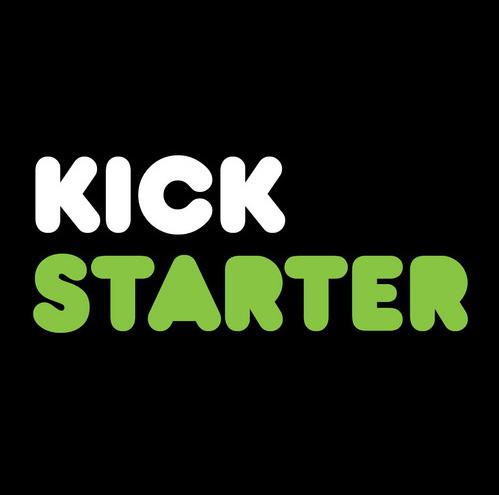 Depending on your perspective, the following news is either a cause for celebration, or a sobering reminder of the state of federal funding for the arts in America. Or perhaps both.
Kickstarter, the funding platform for thousands of arts and other creative projects, announced last week that it is projected, through its website and thanks to thousands of contributors, to be on track to receive over $150 million in pledges in 2012, by far its biggest and most successful year to date.
Depending on your perspective, the following news is either a cause for celebration, or a sobering reminder of the state of federal funding for the arts in America. Or perhaps both.
Kickstarter, the funding platform for thousands of arts and other creative projects, announced last week that it is projected, through its website and thanks to thousands of contributors, to be on track to receive over $150 million in pledges in 2012, by far its biggest and most successful year to date.
This is wonderful news for the arts community, and will help thousands of artists get their projects off the ground. However, the amount does represent a milestone of sorts: while substantial in its own right, the $150 million figure also surpasses the entire 2012 annual budget of the National Endowment for the Arts (NEA), a federally funded program with the might of the United States government behind it.
So it begs the question: as sites like Kickstarter grow in popularity, and help steer more funds to specific arts projects, does federal funding for the arts carry less significance going forward?
We’re big fans of Kickstarter here at Tech in the Arts, and have written about the site’s innovative funding platform and some of the better projects that it has featured. For those who are unfamiliar with Kickstarter, a quick primer: people can post projects online, ranging from art to fashion, film to music, photography to theater, and request donations to get the projects running. The people responsible for the projects outline what they hope to accomplish, how much money they need, and can offer incentives for people to donate money, like free tickets or exclusive merchandise, depending on the amount donated. In the end, if the project fails to reach its fundraising goal (usually within a couple of weeks), no money is exchanged, and the project fails.
As it relates to the juxtaposition of the two entities, first a few caveats. Projects from outside the United States are featured, so the money in question is not confined just within our borders. Second, the site is on track to secure $150 million in PLEDGES in 2012, which does not guarantee funding. According to the site, a little over half of projects fail to meet their fundraising goals, meaning funds for those projects do not change hands. However, with people around the world willing to contribute that much money, it does represent a significant milestone in the arts community.
I wrote last week about the 2013 funding request for the NEA in President Obama’s budget, and welcomed the news about the funding being increased for the new year. However, even with the increase, the budget has failed to increase with the rate of inflation, and is actually a decrease from the early 1990’s, when the budget was in the range of $180-185 million per year.
However, as budget deficits climb and the debt reaches new heights each year, the axe seems to fall on what’s referred to as “discretionary” spending, or spending that’s not mandated by existing laws, first, and that includes programs like the arts, education programs, and public service organizations. This has especially been true in recent years, with calls by some in Washington to drastically cut discretionary programs and cap them from future increases.
As I talked about last week, the NEA is an essential resource for arts organizations, after school programs, schools and community groups who depend on federal programs to survive. Few of these groups generate the amount of internet excitement as the projects on Kickstarter, and cannot rely on social media or online funding mechanisms to continue. Their continued existence rests largely with the help of their local communities, state and local organizations, and most importantly, the federal government.
My concern is that with sites like Kickstarter providing a mechanism for taxpayers to select the individual projects they would like to see funded, the desire to continue to fund the NEA and other arts programs will diminish. Why, after all, have taxpayers pay for a central agency like NEA when individuals can contribute to the projects in their community, or the projects they share an interest with, instead of some program or group they have never heard of?
The NEA has been targeted for elimination in recent sessions of Congress, but thankfully it has survived. Even though the advent of online fundraising tools has provided a steady source of pledges and funding for arts projects, the backbone of arts funding continues to be at the federal and local levels, and any decrease or entire elimination of funding would have a catastrophic impact on artists, the arts community, and arts lovers everywhere.
Another way to look at it this: with the advent of sites like Kickstarter, funding for the arts is increasing, and is becoming a wildly successful endeavor. Last year, Kickstarter received over $90 million in pledges, with several projects hitting the $1 million mark. This is NEW money coming into the arts community, and it deserves to be celebrated.
The ideal, however, is a world where both funding mechanisms continue to move forward, and serve the unique niches they cater to: Kickstarter to the up-and-coming and innovative film/music/theater/art projects and NEA for the community-based groups and local arts organizations.
Congratulations are in order for our friends at Kickstarter, with many more years of continued pledges and success moving forward. It is my hope that the same kind of success and impact continues with NEA, as it faces significant hurdles in Congress to secure future funding.
5 best practices to keep your email marketing relevant
Guest blogger Amelia Northrup is the Strategic Communications Specialist at TRG Arts, the data-driven arts consulting firm. She previously blogged for TITA from 2009-2011 as she completed her Master of Arts Management from Carnegie Mellon. This post is cross-posted on Analysis from TRG Arts.
 We’re not buying the bad rap email marketing is getting these days. You’ve heard it all before. Open rates are down. Users often filter emails by sender and ignore unwanted or low priority communications. Sophisticated spam filters are plucking out and putting in quarantine anything resembling a sales message. And sophisticated users, especially those in the Millennial generation, prefer other media.
We’re not buying the bad rap email marketing is getting these days. You’ve heard it all before. Open rates are down. Users often filter emails by sender and ignore unwanted or low priority communications. Sophisticated spam filters are plucking out and putting in quarantine anything resembling a sales message. And sophisticated users, especially those in the Millennial generation, prefer other media.
The offsetting fact is that access to email is greater than ever. Users of all ages have smartphones and tablets that make on-to-go communication easy, convenient, and ubiquitous. And, those worrisome open rates for email? They actually reached a two-year high in the third quarter of 2011.
So, when our clients ask whether it is worth it to continue to use e-mail in marketing and fundraising campaigns, our reply is: Absolutely.
Why?
Email is cost-effective. In TRG’s two decades of experience, the most effective way to reach (and sell to) arts and entertainment patrons is via direct marketing. Simply put, direct communications get the right message in front of the right patron at the right time whether the message goes out by snail mail, telemarketing, or email. (Read a case study on this.) Of all direct channels, email marketing is often the cheapest weapon in your arsenal. Social media and other new media channels can help a campaign, but, like radio, TV and other “broadcast” media, it’s far less likely to reach the intended target and make the same sort of impact as a direct, targeted message.
Email plays a crucial role in today’s multi-channel campaigns. We advise a 2-1 punch of direct snail mail with some sort of follow-up by email. That second “touch” via email acts as a “booster shot” to a campaign already in motion—reminding patrons of a deal or deadline and keeping your organization top-of-mind.
So, what makes email marketing effective?
1. Keep complete, clean patron records. In all direct marketing, cleanliness is next to godliness--regardless of the channel you’re using, but especially with email marketing. A patron may move from their home and keep their email address and vice versa. Best practice is to keep each patron’s contact information up-to-date and tied to their home address and to their transaction history with your organization.
2. Update patron records regularly. As a rule of thumb, you should always plan to import fresh lists at the end of each phase of a subscription, membership, and donor campaigns. Also, refresh your records and email lists after each event or program has finished its run. That’s how new patrons and their most recent transactions get added to your lists.
3. Make sure that those who opt out stay out. If your email system is worth its salt, it should automatically take people off your lists who opt out—and keep them out if you inadvertently add them again. But what about patrons who have opted out of all communication with you in your ticketing or CRM system only? You must make sure that your email lists include those opt-outs too.
4. Reserve your right to a one-time email. Opting out from email communication is governed by separate, different standards than are “do not mail” and “do not call” designations. A patron’s presence on one of those mail or call suppression lists need not stop you from emailing. Once there is a business transaction--a ticket sale, donation, purchase of an event--you may email both a confirmation of the transaction and one follow-up communication. Best practice dictates that your one follow-up communication include, prominently, the ability to opt-out from future emails. So, we advise that your follow-up be well-crafted to keep patrons coming back and wanting to hear more from you. (Here are some good examples of follow-up emails from Convio.)
5. Invest time in email data hygiene. It’s a lot of effort to pull lists correctly and import those lists into your email system--not to mention tracking which are current and who is on which lists. (That’s why we love systems that integrate all transactions with email addresses!) The rewards of time you invest in your email data are great: higher open rates, greater response to offer, more engaged patrons. A tool like email, which is direct, cheap and nearly universal, is worth every bit of time you invest, and will be relevant for years to come.
NEA Sees Increase in President's 2013 Budget Request
Budget season is upon us. There may be no more exciting time of the year, if you are like me and revel in the workings of our federal government and how policy gets made. Even though Congress is perhaps not the most popular body of work these days (and that may be an understatement), the budgetary season is important because it tends to set the tone for the policy and political arguments for the rest of the year, and in an election year like this one, it becomes even more so.
President Obama’s 2013 budget request, released last Monday, contained spending cuts across dozens of federal agencies, including the armed services, health care, and energy. But one area, accustomed to cuts in recent years, received a welcome surprise this year, seeing their funding request increase from 2012: the arts community.
our federal government and how policy gets made. Even though Congress is perhaps not the most popular body of work these days (and that may be an understatement), the budgetary season is important because it tends to set the tone for the policy and political arguments for the rest of the year, and in an election year like this one, it becomes even more so.
President Obama’s 2013 budget request, released last Monday, contained spending cuts across dozens of federal agencies, including the armed services, health care, and energy. But one area, accustomed to cuts in recent years, received a welcome surprise this year, seeing their funding request increase from 2012: the arts community.
The president’s budget, which clocked in at about $3.7 trillion dollars, included a request of $154.255 million for the National Endowment for the Arts (NEA), which is a slight increase of about $8 million from the funding that the NEA received this year. While still lower than the funding NEA received in 2010 ($167.5 million), it is a step in the right direction.
As the New York Times reported, included in the increase is about $4 million that would go directly to non-profit arts organizations and another $2.7 million for state and regional arts organizations.
As many in the arts community are well aware, the NEA serves a critical role in supporting artists and arts programs around the country. The vast majority of its annual budget goes towards grants that support artists in the communities of music, art, photography, theater, literature, and more. Just as important are the group’s efforts in art education, educating and introducing children to the wonders of the arts.
Not only are the group’s efforts vital to the artistic community; they also help create jobs and boost the economy in a tough economic climate. As NEA Chairman Rocco Landesman said last week, “A dollar invested directly through the NEA is matched by $8 in additional investment and generates $26 of economic activity in the community. In short, art works.”
Now when I say “budget request,” it is specifically that: the President is required by law every year to submit his budget request to Congress. This document is not law, but merely the budget that the president would like to see. It’s more of a wish list, or set of funding appropriation requests, that the president would like to see fulfilled. It is up to Congress to pass appropriations bills for each federal department and send them to the president for approval.
(If you’re interested in hearing me talk about the budget more in-depth, I appeared on the Carnegie Mellon radio program “Policy that Matters” last week to talk about the president’s proposal, and it is now available online.)
The important thing to remember about budgets is they set forth priorities. They help set the president’s agenda and represent a list of what he believes is worthy of investment. The commitment to the NEA, even though the funding increase is minor, represents a commitment to improving the lives of artists everywhere. In a tough economic climate, this commitment has never been more important for the arts community.
I last wrote about protecting federal funding for the arts this past October, and while the president’s budget is an encouraging sign, the calls for budget cuts and austerity measures continue in Washington. There is certainly still a chance that funding for the NEA may decrease when the budgetary bills are passed by Congress later this year.
There are certainly more pressing budgetary topics in the news, and the amount dedicated to NEA is a very small percentage of the overall budget. But for the artistic community, and for those who depend on the programs NEA supports, they remain a vital part of our American psyche and play a huge role in advancing the joys and benefits of the arts. In tough economic times however, and calls for budget austerity by some, there will be an incentive to decrease the budget in as many areas as possible.
The arts are as deserving as ever of our continued commitment to support the NEA and the causes it advances. Seeing the increased budgetary request for the endowment is a welcome sign. Even though it seems like Congress can agree on nothing these days, it is surely our hope that the continued support of NEA and arts programs everywhere will be one area where all sides can agree.
Expanding the Dialogue with the CultureCode Initiative
While the intersection of technology and the arts has always presented a series of exciting opportunities for us here at Technology in the Arts, the reality is many cultural and arts organizations find technology challenging. It can seem especially prohibitive to small organizations and individual artists who may lack expertise. The Arts Council England and Codeworks have developed an interesting forum to increase the dialogue between arts organizations and the developers of this intimidating technology, the CultureCode Initiative.

No definition fits the CultureCode Initiative better than the one straight out of their digital press release,
“The CultureCode Initiative is a series of free events designed to open up new opportunities for highly skilled developers, designers and assorted geeks to work collaboratively with cultural organisations and artists.”
Here’s why I find the idea of the CultureCode Initiative so fascinating: technology often overwhelms people and appears antithetical to cultural organizations that feel that new technology can make them obsolete. The CultureCode Initiative seeks to completely debunk that myth, as Tyneside Cinema Chief Executive Mark Dobson explains, “You don’t need to have any previous experience of digital to attend this event”.
The CultureCode Initiative’s website even states “you don’t need an IT department” to partake and learn from their events, and some are guaranteed to be "jargon-free". The advent of web 2.0 and the current culture of sharing absolutely everything via the internet has democratized information. The CultureCode Initiative, to me, is increasing accessibility and informing arts and cultural organizations know that it is possible and it is easy for them to join this discussion.
Most importantly, perhaps, the discussion is not meant to be in one direction. While most similar opportunities are aimed at instructing arts organizations in utilizing technology, the CultureCode Initiative encourages two-way dialogues, with events showing developers how they can take a new look at cultural organizations and how cultural organizations can reconsider their “digital assets”.
If you’d like to join the discussion live, their first events start early next week (Tuesday, February 21st ) and CultureCode ends with a huge twenty-four hour Hack towards the end of March.
If you don’t happen to live in the North East of England (where these events take place) you can join the discussion digitally by tweeting @Culture_Code.
Any of our readers going? Be sure to let us know your perceptions of the events – you can bet Tech in the Arts will be watching to see what cool solutions come out of the CultureCode Hack.
The Participatory Museum: A Must-Read Book for Current and Future Arts Managers
Traveling this weekend, I decided to put aside my school work, leave my laptop at home and finally read Nina Simon’s, The Participatory 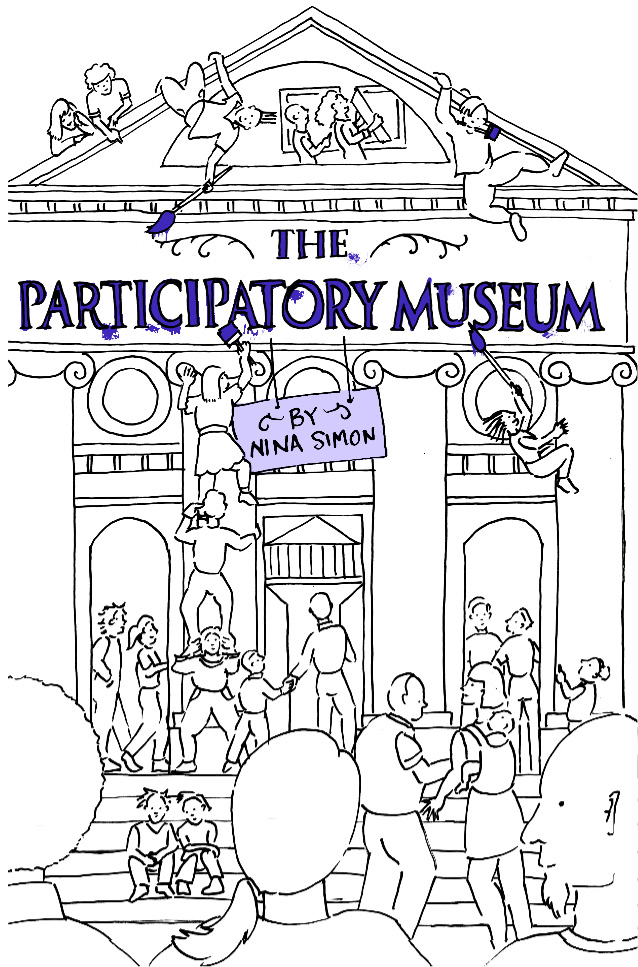 Museum.
As an arts management student, I cannot emphasize enough just how relevant this book is for cultural institution administrators, especially future ones. I have decided procrastinating over the weekend was in the name of the future of museums (at least that’s what I’m telling myself…).
Museum.
As an arts management student, I cannot emphasize enough just how relevant this book is for cultural institution administrators, especially future ones. I have decided procrastinating over the weekend was in the name of the future of museums (at least that’s what I’m telling myself…).
Nina Simon, the author of the book and Museum 2.0 blog, is the Executive Director of the Museum of Art & History in Santa Cruz. Simon shares her own experiences of visiting, working and participating (or not) in museums throughout the book. What I find most critical to the book’s success in discussing participation in the museum setting, and doing so credibly, are the countless examples and case studies ranging from science museums to art museums, and Simon’s personal, professional accounts to events she observed and experienced. The case studies are relevant, contemporary, and thematically and geographically diverse.
The purpose of this post is not to offer a summary of the book, though if it were, I would say this: it is an introduction, resource and guide for cultural institutions on where/when/why/how to engage visitors as “cultural participants, not passive consumers.”
Instead, I will focus on three components of visitor participation and engagement: the different types of participants, the need for constraints and the four models of participation.
Until this weekend, I was under the impression there are two types of museum goers: those who will sit down at a computer screen to video record their reaction to an exhibition as prompted, and those, like myself, who will not. I don’t think I’m alone in that fallacy either. If video-recording or commenting on my experience is the extent of the museum’s participatory program, well then, I’m out of luck. Simon applies research conducted by Forrestor Research to explain the participatory trends and types of audiences in the cultural institution setting. These audiences are:
1.The creators
2.The critics
3. The collectors
4. The joiners
5. The spectators
6.The inactives
Think about YouTube and Flickr. These social media sites encourage participation from all types of audiences, including those who want to post content, share videos and upload photos (the creators); those who want to publicly like, dislike and rate content (the critics); those who like to aggregate the videos and photos they most enjoy in their own profiles (the collectors); those who are members or have an account on social network sites (the joiners); those who consume the videos, photos and blog posts of those who create them (the spectators); and finally, those who have no interaction with online social sites (the inactives).
Ah ha! So those of us who don’t feel comfortable sharing at the video commenting station aren’t lazy museum participants! Rather, the museum has neglected to incorporate a means of participation that engages our type of audience. It is often the case that cultural institutions engage either the creators of user generated content, or the spectators, polarizing the museum audience into those two groups.
Knowing there are critics, collectors, joiners and the inevitable inactives who have what Simon calls, “intermediate participatory behaviors,” a museum must create participatory experiences to discourage participation inequality and to encourage engagement.
Participation inequality leads me to my next point. To encourage participation from all audience types, exhibits must be designed with limitations, constraints and scaffolding. This may seem counter-intuitive if you want open, unrestricted and expressive responses from your audience. However, open-ended questions and activities cause many visitors to run away in fear and self-consciousness. My most favorite art-related quote (by Oscar Welles) so brilliantly addresses this barrier to participation, productivity and creativity: “the enemy of art is the absence of limitation.”
Simon writes
The best participatory experiences are not wide open. They are scaffolded to help people feel comfortable engaging in the activity. There are many ways to scaffold experiences without prescribing the result…A supportive starting point can help people participate confidently – whether as creators, critics, collectors, joiners, or spectators.
Scaffolding and constraints make participating less daunting and audiences feel more confident in themselves and their ideas. Simon provides examples and case studies of successful, constrained projects and activities that engage all types by limiting self-expression and open-ended opportunities. This is brilliant. Is it a completely new idea? No. But Simon provides all the information you need to create quality outcomes for all. She explores what limitations in the cultural institution setting are, how they work, why they work, who they benefit, and how you can implement them in your organization.
Now that we understand the diverse needs and types within the audience and how to scaffold the creative experience, we can now take a look at Simon’s four different models for participation:
1. Contributory
2. Collaborative
3. Co-creative
4. Hosted
The second half of Simon’s text focuses on each model of participation. You can access a handy PDF version of Simon’s matrix that organizes each model according to the organization’s commitment to community engagement, need for control in the participatory process, vision of relationship with the participants, goals for the participants and nonparticipants, etc.
Depending on the organization’s mission, capacity and the situation, different models of participation will be more effective than others. The most critical factor to determine when deciding what model of participation to employ is the extent of control the organization wants over the process and its participants. Once the question of control has been addressed, museums can then determine their vision and desired outcomes for the project, the type of participation activities required to reach those goals and the role of museum staff. The final task is to measure the success and impact of the participatory project.
I recommend this book to current students and professionals in the museum field. As we enter an age of an increasingly diverse society, it will become even more critical for museums to create opportunities that encourage all audiences to attend, engage and participate.
The Participatory Museum is available in three formats: as a paperback book ($25), a downloadable file ($18), and online (free). I encourage our Technology in the Arts followers to read the book, or simply a chapter of it, and contextualize the material in terms of your own arts organization- be it a museum, community center, arts center or gallery. How do you currently encourage visitor participation? Are you engaging all types of participants? If not, what types of programs, projects or exhibits can your organization support to better engage more visitors?
For further information, check out this previous Technology in the Arts post on a talk given by Simon at the Pittsburgh Children's Museum.
Mobile Fundraising Applications: The Apple policy over one year later
 Apple banned fundraising apps for the iPhone, iPad, and iPod over a year ago (to much controversy) just as the first fundraising app hit the market through eBay/MissionFish. The field of software for fundraising as a result of the ban is anemic.
Until this policy is removed it seems unlikely that major fundraising will take place via mobile applications. As the iPhone is the number one smart phone on the market developers have much less incentive to build software for fundraising purposes. It can be extrapolated that once the ban is lifted the fund-raising/development world will be playing catch-up for years.
Apple banned fundraising apps for the iPhone, iPad, and iPod over a year ago (to much controversy) just as the first fundraising app hit the market through eBay/MissionFish. The field of software for fundraising as a result of the ban is anemic.
Until this policy is removed it seems unlikely that major fundraising will take place via mobile applications. As the iPhone is the number one smart phone on the market developers have much less incentive to build software for fundraising purposes. It can be extrapolated that once the ban is lifted the fund-raising/development world will be playing catch-up for years.
Here are two notable successes/efforts to do fundraising through mobile apps over the last year:
eBay and Missionfish are on the verge of offering donation capabilities through eBay's mobile application for Android (it was originally intended for the iPhone). These donations should be relatively easy to put through and involves the user downloading the mobile eBay application and then searching for your cause. On the organization's end the donation item has to be set up as well as the account which will interface with paypal.
In the UK a group called Marie Curie Cancer Care managed to get around the ban by setting up an app that allows users to request donations from friends through text messaging. The application itself doesn't collect the funds but is party to gathering them.
If you want to take action, you can sign the current petition to overturn the ban here.
Speaker Series' Spotlight: Chad M. Bauman, Director of Communications for Arena Stage at the Mead Center for American Theater
On February 10th, the Master of Arts Management program at Carnegie Mellon University will welcome Mr. Chad Bauman, Director of Communications for Arena Stage at the Mead Center for American Theater to speak as part of our Speaker Series. His presentation, Confessions from an Arts Marketer – Learning from the Past, Looking Toward the Future, will highlight the worst practices in the field, what can be learned from them, and how to move beyond them.
I recently chatted with Chad and talked Tweet Seats, fire in the belly, and what he wished he had known about the field from the very beginning…
Speaker Series. His presentation, Confessions from an Arts Marketer – Learning from the Past, Looking Toward the Future, will highlight the worst practices in the field, what can be learned from them, and how to move beyond them.
I recently chatted with Chad and talked Tweet Seats, fire in the belly, and what he wished he had known about the field from the very beginning…
Elizabeth @ Technology in the Arts: You’ve held top, senior positions as the previous Director of Marketing and Communications for Americans for the Arts and now as Director of Communications for Arena Stage. You’ve clearly figured it out. But even so, what’s the one piece of advice you wish you had received before entering the field?
Chad Bauman: I am very thankful for my education from CalArts in Producing and Theater Management. But I would have to say…I wish I had learned how to get stuff for free. When you are first starting out, it’s how good are you at convincing people to give you stuff for free- advertising space, promotional opportunities…it’s absolutely critical for smaller companies; you have to do it really well.
E: Now, with all the social media networks out there, it must be easier to get recognized and make connections with those who CAN give you stuff for free.
C: Earlier on, it was super controversial for arts organizations to be on social media; they didn’t understand what the value would be. It also used to be a smaller company could distinguish itself on social media, but now there is a lot more clutter. Being on social media is an exceptional way to get free promotion, but now you have to compete with everyone else out there.
E: So I have to ask, in your opinion, which is the better platform to get a message out and to get attention, Twitter or Facebook?
C: I’m liking Twitter more and more. It’s the most efficient platform. It began with Friendster, then MySpace, then Facebook. I think Facebook use is on the decline and Twitter is on the incline. It’s more of a conversational tool.
E: How about audience members Tweeting during a show? Tweet Seats?
C: You have to be careful; you have to find a balance with Tweet Seats. There was a case where a theater established Tweet Seats for a show, but the resident writers of the production were never consulted and they were not on board with it.
E: What are you more in favor of then, Tweet Seats or post-experience Tweeting?
C: I am more in favor of post-experience Tweeting. You can’t get the full experience if you are on your phone, you’ll miss something. You can miss the most crucial detail, especially in a very nuanced performance. There are many other ways to invite conversation about a production.
E: For those of us logging in hours on online job boards and stalking career services on an daily basis, what are the qualities you look for as Director in a potential employee or intern?
C: Fire in the belly. By that I mean, a person who is internally motivated. I’m not sure you can teach it. They want to do a great job and are motivated by wanting to do a great job. You can teach skills, but you can’t teach internal motivation.
E: In particular to marketing?
C: I look for people who are not afraid to take risks, calculated risks, but risks nonetheless. You have to be willing to take a risk in an entrepreneurial spirit.
E: We, my fellow job and internship seekers, thank you for that advice! I don’t want to take up too much more of your time, so one last question. In a recent blog, I looked at the changing face of America over the next four or five decades and its shift to a minority-majority population. How can visual arts or performing arts organizations expand their audience to reflect this change?
C: First, it’s about programming and community outreach. At Arena Stage, we go out into the community, to churches, to schools, to make personal relationships. You can communicate to younger demographics about your organization’s activity and productions using technology tools. But it’s about programming. Marketers are very good at targeting a specific demographic and figuring out what tools to use. But regardless of the tool, there has to be an interest in the production or the organization’s mission.
You can read more about this Speaker Series event on the Master of Arts Management Speaker Series' website, discuss arts marketing with Chad on his blog, and find further information about the Master in Arts Management (MAM) program on the Heinz College webpage.
Interview with Chad Bauman conducted and condensed by Technology in the Arts contributor, Elizabeth Quaglieri.
Artistic Inspiration and the Fall of Kodak
A new exhibit in our nation’s capitol is as breathtaking in its quality as it is in its simplicity: seven world renowned artists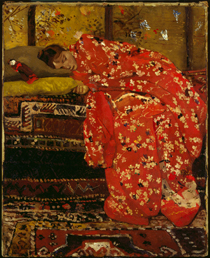 offering up private photographs of their daily lives and sharing them with the world, alongside beautiful works of art. The uniqueness of the exhibit, however, lies in its inspiration.
Kodak, the company loved around the world for its handheld cameras and impact on the lives of artists everywhere, serves as the inspiration for the exhibit, as all of the photographs taken are from simple Kodak handheld cameras. Given recent events, however, the inspiration is bittersweet: having recently declared for bankruptcy, and fear of liquidation rampant, artists everywhere face the reality of a world without the company that inspired so many of them to take their first photograph.
offering up private photographs of their daily lives and sharing them with the world, alongside beautiful works of art. The uniqueness of the exhibit, however, lies in its inspiration.
Kodak, the company loved around the world for its handheld cameras and impact on the lives of artists everywhere, serves as the inspiration for the exhibit, as all of the photographs taken are from simple Kodak handheld cameras. Given recent events, however, the inspiration is bittersweet: having recently declared for bankruptcy, and fear of liquidation rampant, artists everywhere face the reality of a world without the company that inspired so many of them to take their first photograph.
The exhibition, Snapshot: Painters and Photography, Bonnard to Vuillard, opened this past Sunday and continues until May 6th at The Phillips Collection Museum in Washington, D.C. Organized in conjunction with the Indianapolis Museum of Art and the Van Gogh Museum in Amsterdam, the exhibit features the work of seven dynamic artists: Pierre Bonnard, Maurice Denis, Edouard Vuillard, Felix Vallotton, George Hendrick Breitner, Henri Evenepoel and Henri Riviere.
The idea behind the exhibit is simple: taking their cue from the inspiration of the Kodak handheld camera, first introduced in 1888, all seven artists experimented with the simple device and provided images that captured their daily lives and the world around them. All seven artists captured images of beauty and resonance, and all together compiled over 200 photographs for the exhibit. The artists as a team took over 10,000 photographs with their trusty Kodak cameras, and the great thing about the exhibit is that most of the photos are unpublished and never seen before in public. Most of the images were meant to remain private, and instead of keeping them in their personal collections, the artists have decided to share them with the world.
One of the nice things about the exhibit is how some of the photographs in the collection served as inspirations for later paintings. You can see, side by side, the original photographs next to the paintings. The other parts of the exhibit feature over 70 paintings, drawings and prints from the artists.
The larger point here, at least for me, is how this relates to the recent news of Kodak’s bankruptcy. As reported by the New York Times and others, Eastman Kodak filed for bankruptcy last month, with many in the business world predicting that liquidation may be in its future. Founded over 131 years ago, Kodak has struggled to remain competitive in today’s technological environment, with more and more photographers going digital and leaving the company’s tried and true 35mm cameras behind.
Kodak is not the first company to struggle in the face of new technologies, and it certainly will not be the last. But as it relates to the arts and technology as a whole, this case takes on additional meaning. So many artists and photographers first fell in love with cameras and taking photographs because of Kodak and their simple 35mm cameras. In the age when film was king, Kodak had a near monopoly on the 35mm business, with competition from Fuji in recent decades. Kodak’s efforts were responsible for creating millions of artists and some of the images that have resonated with us for decades.
Kodak’s lessened stature may not have been noticed by many over the past ten years, as digital cameras have boomed and consumers have been more concerned with LCD screen size and optical zoom size instead of remembering what kind of film to buy. But for anyone who has ever bought a Kodak handheld and been introduced to the wonderful world of photography, it stings a little bit.
Even as Kodak sought to expand its portfolio over the past decade, knowing that this moment was going to come, it could still count on people seeking that old fashioned thrill of the disposable camera. But as more and more people turned to digital, and the company failed to do well enough in the other fields it has ventured into in recent years, including printers and digital cameras, it was only a matter of time until the company was in danger of folding.
I still remember taking pictures with a Kodak handheld when I was a kid, eagerly joining my mother as we went to the store to develop pictures of our family vacations. When I worked in retail in high school and college, I worked with Kodak vendors who introduced us to their latest 35mm and digital cameras. I had friends who worked for Kodak, both at their main offices in Rochester and as field representatives.
So as it relates to the exhibit in Washington, it’s refreshing to see a new exhibit that seeks to capture the joy of artists taking simple pictures with their trusty Kodak handhelds. Even as technology changes, ultimately for the better, a nod to the photograph’s past is especially appreciated.
The beauty of technology is that current and future generations will find inspiration from the arts in new and exciting ways. Digital cameras are becoming extremely affordable and are allowing more and more people to experience the joy of photography. Online editing tools are allowing people the tools to create beautiful, dynamic images at resolutions as large as their imaginations.
Twenty or thirty years from now, will museum exhibits look back on the era of our current technology, digital cameras, as society leaves them behind for something else? It’s too soon to tell, but we do know one thing: the beauty and joy of photography will continue to entertain and capture the imaginations of people of every age and background. As we move forward in an era of exciting technological breakthroughs and products, it’s a shame that a company like Kodak may not be around to enjoy it.
(Photo: courtesy of the Phillips Collection)
Welcome to the World of Old School 3D Photography
Over a hundred years before 3D technology invaded movie theaters and living rooms, another form of 3D image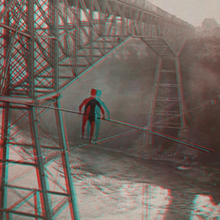 technology was incredibly popular around the globe. The images were called stereographs, and the technology was quite simple: two pictures of the same image, shot from slightly different angles, were viewed through a narrow device that only let you see one image with each eye, giving the appearance of a 3D image (remember playing with a ViewMaster as a kid? The technology is quite similar).
Now, thanks to the work of the New York Public Library, you can view over 40,000 stereographs, most of them over a century old, and create your own animated GIF that offers the illusion of a 3D image. In addition, you can also create modern 3D photos of the same images, viewable through those hokey blue-red 3D glasses. The best part? Sharing your creations with your fellow arts lovers!
technology was incredibly popular around the globe. The images were called stereographs, and the technology was quite simple: two pictures of the same image, shot from slightly different angles, were viewed through a narrow device that only let you see one image with each eye, giving the appearance of a 3D image (remember playing with a ViewMaster as a kid? The technology is quite similar).
Now, thanks to the work of the New York Public Library, you can view over 40,000 stereographs, most of them over a century old, and create your own animated GIF that offers the illusion of a 3D image. In addition, you can also create modern 3D photos of the same images, viewable through those hokey blue-red 3D glasses. The best part? Sharing your creations with your fellow arts lovers!
As reported by the New York Times last week, the NYPL Lab’s site, called the Stereogranimator, is simple to use. To create an animated GIF, first, you select a pair of similar looking pictures from a collection of over 40,000 images, some of which date back to the nineteenth century. Second, you choose your focal point within the image and the speed of the animation. Finally, you can share the animated GIF on social media sites or embed in your blog. You can see my custom image below!
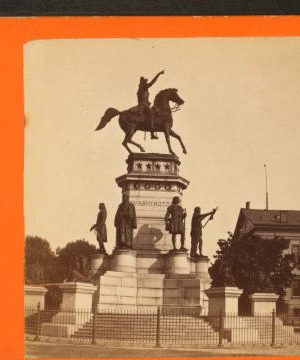 GIF made with the NYPL Labs Stereogranimator
GIF made with the NYPL Labs Stereogranimator
The process for the 3D anaglyph image is similar. After choosing a pair of images, you choose your focal point within the image and hit the create button. You can see my 3D image below, which can be aided just in case you have those old-school blue-red 3D glasses!
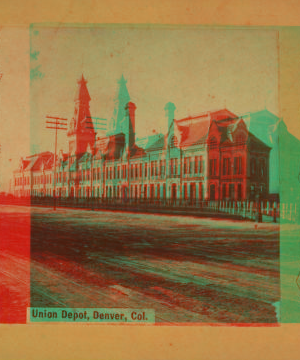 ANAGLYPH made with the NYPL Labs Stereogranimator
ANAGLYPH made with the NYPL Labs Stereogranimator
As I scrolled through the photographs, it surprised me how many images were taken back then that look so similar. As artist Joshua Heineman, the brains behind the operation, describes on the NYPL Lab site, this was intentional: looking at both pictures, the viewer could be provided with a sense of depth that simply was not possible by looking at one image. With so many of these image pairs being captured, the public would use the stereograph, the ultimate entertainment device of the late 19th century, to see a very early form of 3D technology for themselves. Like video games or movie theaters today, the technology was a hugely popular for several decades.
The New York Public Library’s site is another example of an encouraging trend: more libraries opening up their vast collections to an online audience for free. While some library systems have been hesitant to open up too much of their catalog to online audiences, the NYPL has been a leader in embracing the online community: in addition to their stereograph project, the library also has a project titled “What’s on the Menu?,” where people can help the library transcribe historical restaurant menus to add to its data of food prices and trends.
Even better? Improving the experience through technology, in this case with animated and 3D images. While the technology is far from groundbreaking for today’s audience, it does offer a unique historical look back at a technology that was so popular a century and a half ago.
We here at Tech in the Arts have written before about all the cool things happening today with 3D technology, and none of them have to do with the latest films hitting the movie theater. Through collaboration, open source technology and access to historical materials, the New York Public Library and others are embracing a new movement towards more social interaction between institutions and their patrons, a movement we strongly embrace and encourage.
Cultivating a More Diverse Audience: The Future of Museums
A 2010 report published by the Center for the Future of Museums, an initiative of American Association of Museums, forecasts the changing face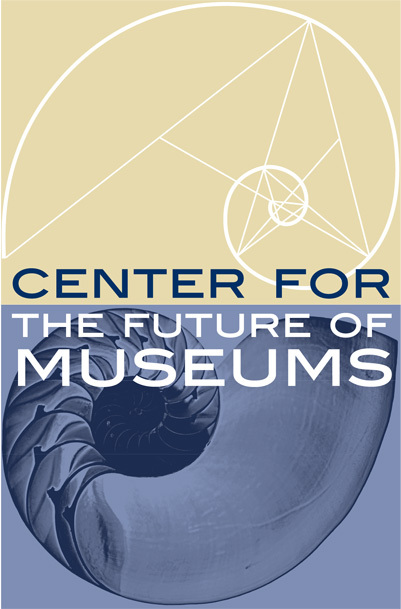 of the United States over the next four decades and the future of museums in light of an increasingly diverse population and “majority minority” society. The report, “Demographic Transformation and the Future of Museums” is a must-read for museum managers and administration- if only for the graphics and statistics projecting the upcoming drastic and rapid shift in demographics in the United States.
A concise report, complete with graphics, a call to action, and a list of online resources for demographic information and socio-economic indicators, the American Association of Museums (AAM) analyzes the data on patterns of museum use and trends in societal growth to answer the questions
of the United States over the next four decades and the future of museums in light of an increasingly diverse population and “majority minority” society. The report, “Demographic Transformation and the Future of Museums” is a must-read for museum managers and administration- if only for the graphics and statistics projecting the upcoming drastic and rapid shift in demographics in the United States.
A concise report, complete with graphics, a call to action, and a list of online resources for demographic information and socio-economic indicators, the American Association of Museums (AAM) analyzes the data on patterns of museum use and trends in societal growth to answer the questions
How will people use museums in the future? And which people will use them?
The forecasted demographic transformation directly affects the museum audience and museum professionals as today’s typical museum goer, a 45-54 year old non-Hispanic white adult, is no longer an accurate reflection of the American public.
Below is a summary of the report’s key findings, surprising statistics, focus group outcomes and suggestions on how to cultivate a diverse, museum audience that’s users reflect the diverse, 'majority minority' communities of America’s future.
Sometime between 2040 and 2050, depending on which projection model is employed, the current U.S. minority groups- African Americans, Latinos (of any race), Asian Americans and Pacific Islanders, Native Americans and others, including those identify as multiracial- will collectively become the new majority in the United States. The proportion of non-Hispanic whites will fall below 50 percent for the first time since the country was founded.
The future of American society is one of “majority minority” in which disparate groups and minorities constitute the collective majority of the population. This compares to the data collected from 2008 on the racial and ethnic composition of the U.S. population in which, by both race and ethnicity, Whites and non-Hispanic whites, made up 74.3% and 84.9% of the population.
The AAM recognizes the imperfections of the monolithic and conventional categories of white, black, Hispanic, and Asian as more and more individuals seek a more multi-racial and ethnic option for classification.
While there are many factors affecting an individual’s decision to attend what the National Endowment for the Arts terms “benchmark arts” (attendance at musical plays, non-musical plays, jazz concerts, theater, opera, classical music performances, the ballet and visual art venues), such as distance, accessibility, cost of admission, income and education, the latter two are most often the major determinants of attendance.
Who has traditionally been the art museum user? And who will it be? While the percentage of the U.S. adult population visiting art museums/galleries declined by 4% between 1992 and 2008, non-Hispanic whites, ages 45-54, are the predominant attendees. Consider this graphic:
If the forecast for the next four decades is correct and the current pattern in museum attendance remains unchanged, art museums and galleries will not serve the majority of the American population. There are economic, cultural, historic, educational, scheduling and interpersonal barriers to entry that affect an individual’s decision and motivation to attend; however, these barriers must be broken in order to create a more inclusive and inviting museum experience for the future America.
What can be done to increase museum/gallery attendance among diverse groups and reduce the great ethnic and racial disparities in museum participation? It is up to the museum administrators, managers, marketers, developers, programmers, educators and front-line personnel.
Know your audience. All of them. Know your neighborhood and community. Read the newest research. Many Urban Studies institutes have published reports on why specific demographics do or do not attend museums or visual art venues. For example,
…studies suggest that African Americans are more likely to attend events characterized by black themes and in which blacks are well-represented among performers, staff and audience members. This has been dubbed the ‘FUBU test’ –for us, by us.
Further research indicates African Americans and Hispanics are
More likely than others to list the desire to ‘celebrate heritage’ and support a community organization’ as a reason to attend arts and cultural events.’
Studies specific to Hispanics found
Hispanics with lower education and income levels tend to seek cultural activities that engage extended families and promote family unity, as well as providing broadly defined educational activities for children
The report features six brief case studies on museums that have studied the composition of their audience and considered what the future of their audience and community will be. In response to their analysis, museum administrators and managers have implemented unique education programs and outreach activities to address the needs of a growing diverse community. Additionally, youth focus groups have helped to identify what deters younger ages from attending museums and what they would like the museum experience to be- their candid answers are published in the report.
Perhaps the most telling graphic is this map of the United States indicating the metropolitan areas throughout the country in which non-Hispanic white children (defined as younger than 15) are now in the minority:
To quote the infamous Whitney Houston, "...the children are our future," and this map indicates just that- a future of great racial and ethnic diversity. As society's make-up changes, so must the institutions that serve it. Listen to the youth in the community. Not only will they be the future constituents of your museum but they also offer valuable insight as to what will get them to and through the door. And let's not forget the Millennials; a generation that cares more about a global community, participatory experiences (a la Nina Simon’s ‘participatory museum’) and engagement, than making distinctions of race and ethnicity.
As a result, their [Millennial] tastes and motivations may be previews of a future that is already taking shape. In this particular future, race and ethnicity may turn out to be less significant influences….What they [Millennials] want from museums are interactive, immersive, and participatory activities. They want to be more than outside observers looking in.
Still not sure how to address the Millennials' need for an interactive, engaging and participatory experience? Consider this standout suggestion for arts and museum managers: the report cites Jane McGonigal’s theory that museums should take a lesson or two from video games and game designers. Here’s what the report say
…museums can learn a lot from game designers, who know how to design attractive, even addictive experiences…unlike the best games, museums often fail to provide visitors with clear instructions or the feeling of having successfully accomplished something.
Looking forward, racial, ethnic and generational changes will require the museum to encourage new users to attend and to implement programming that is as varied as the community in which it exists. The future composition of the United States is vastly different from that of today. And if museums do not grow in reflection  of the changing demographics and population, well, I will leave you with this graphic and you can decide what the future of museums in America will be…
of the changing demographics and population, well, I will leave you with this graphic and you can decide what the future of museums in America will be…
Performing Arts Legacies Online
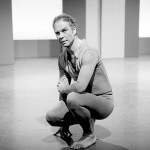 Recently the Merce Cunningham Dance Company shut down following the death of Merce Cunningham. The action taken by the founder are somewhat unique in the world of the arts and there have been observations of what this means. Meanwhile the content of the Merce Cunningham Company, at least in part can still be found online through various video projects and the archive left by the company through the Living Legacy Plan and maintained by the Merce Cunningham Trust. The continued availability of this content is carrying on the legacy in the true spirit of its founder who frequently wrote of the transitory nature of his performance and was a student of Buddhist philosophy.
Recently the Merce Cunningham Dance Company shut down following the death of Merce Cunningham. The action taken by the founder are somewhat unique in the world of the arts and there have been observations of what this means. Meanwhile the content of the Merce Cunningham Company, at least in part can still be found online through various video projects and the archive left by the company through the Living Legacy Plan and maintained by the Merce Cunningham Trust. The continued availability of this content is carrying on the legacy in the true spirit of its founder who frequently wrote of the transitory nature of his performance and was a student of Buddhist philosophy.
Further performances have resided online for years through projects like On The Boards TV which is currently celebrating its two year anniversary with a sale of online content. The content can be accessed through one time rental, purchase, and through subscription and is high quality, having been shot on 4-5 hi-definition cameras. Through content providers like On The Boards TV and do it yourself online venues such as YouTube and Vimeo the amount of online performing arts content has grown significantly. Artists are gradually recognizing that real content online is critical for accessing new audiences and maximizing market penetration.
Innovation in the field of dance and theater can go deeper than this. Critics have noticed a trend at fringe festivals of micro-performances and intimate theater. While artists seem to be taking advantage of physical spaces for the time being, the possibilities for using digital spaces are increasing everyday. The idea of doing live performances online has certainly received attention. The growth of services such as Skype make interfacing virtually and therefore using these same services as a performance venue more likely every year.



